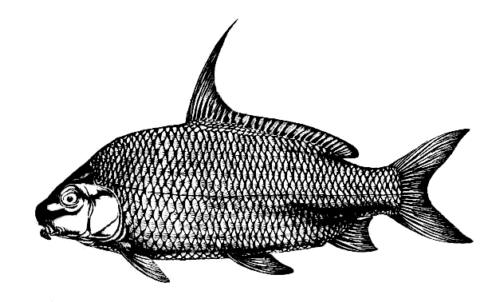
Lesueur's 1817 article introduces a new genus under the name Catostomus. The genus is still valid today, but in 1820, Rafinesque split Catostomus into subgenera, including Carpiodes and Moxostoma. Modern taxonomy refers four of the species shown below to these subgenera.
| Shown here is Carpiodes cyprinus (Lesueur), known commonly as carp. Along with a technical description, Lesueur writes that fishes of the genus Catostomus (hence Carpiodes) "are not in general estimation, the flesh of the major part being soft and insipid." He continues: "C. cyprinus appears to be more valued than the rest; it becomes very fat, and is common, at certain seasons, in the markets of Philadelphia. Their habits, and the mode of taking their food, preserve them from being taken with the hook..." |

|
The article in which these descriptions and drawings appear is
C. A. Le Sueuer, "A new genus of Fishes, of the order Abdominales, proposed, under the name of Catostomus,and the characters of this genus, with those of its species," Journal of the Academy of Natural Sciences of Philadelphia, 1 (1817) 88-96.
| Moxostoma macrolepidotum (Lesueur). [The placement of the first describer's name between parentheses indicates that the species is currently classed in a genus other than that in which the describer placed it. Note that one of the fishes shown on this page retains Lesueur's original classification.] |
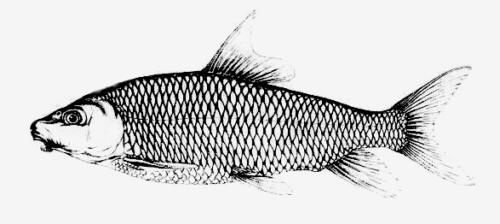
|
| Moxostoma macrolepidotum (Lesueur). In Lesueur's article, this fish is named Catostomus aureolus, but this taxon is now regarded as a synonym for the generally accepted name, Moxostoma macrolepidotum. |
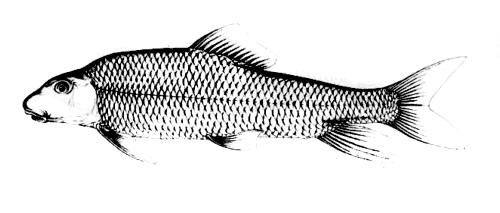
|
| Catostomus elongatus Lesueur. Lesueur writes, "In an individual of two feet long, the head measured three inches to the tip of the snout. The colour of the specimen described could not be ascertained, in consequence of its being in a dried state: it forms a part of the collection of the Academy of Natural Sciences of Philadelphia...With the exception of the C. Cyprinus, this is the largest species that I have seen. It was discovered in the river Ohio, by Mr. Thomas Say." [Say and Lesueur both worked at the Academy and moved to New Harmony.] |
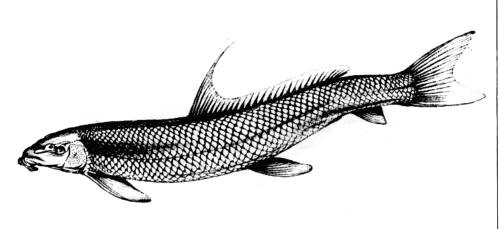
|
| Moxostoma duquesnii (Lesueur). "This new species is so strongly marked," Lesueur writes, "that it will be easily distinguished from the foregoing... It inhabits the Ohio; and was discovered at Pittsburg, the ancient Fort Duquesne, by Mr. Thomas Say." |
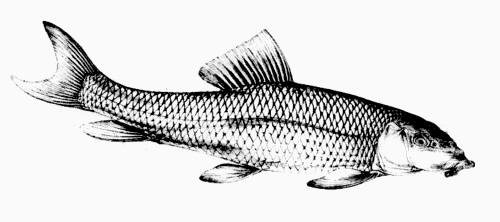
|